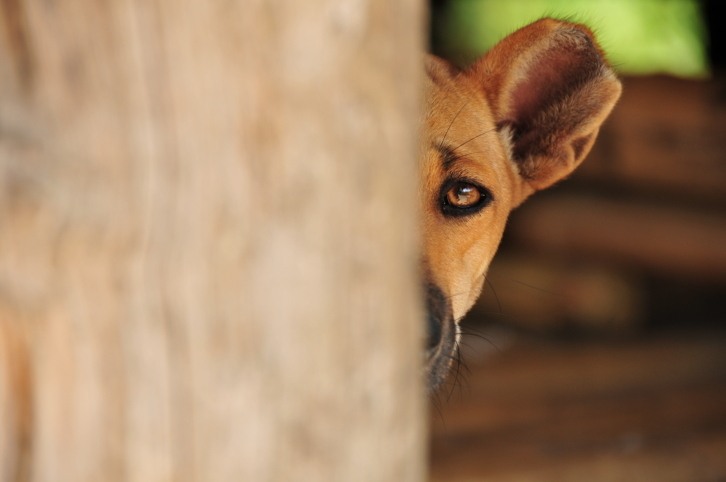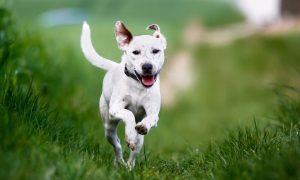“This post contains affiliate links, and I will be compensated if you make a purchase after clicking on my links.”

“We adopted two dogs as 4 month old pups. They’d been abandoned in a barn and had no human contact. Nice dogs, but very shy of people. They’ll start and jump away if someone reaches for them, and will move away if someone gets to near. They’ll bark at anyone who arrives, no matter how frequently they visit. In itself that’s not a problem. It keeps them from being under foot. But, they won’t come when called, and makes it hard to show affection for them. We’re gradually winning their trust, and we ignore them when they are lying around or if they bark – making it “not all about them”. Finnigan loves to play ball, and will drop the ball in my hand, but I cannot pet him when he does. I can (usually) pet them outdoors if they are lying down, or at the door to come in. But rarely indoors at all. Any advice as to how to gain their trust will be appreciated.” – Luke M.
Hi Luke,
First off I want to commend and thank you for choosing to adopt two dogs and providing them a great home! It sounds like both dogs lack socialization and confidence. Thankfully they are still young, so through proper socialization you should make significant improvements. I would also engage them in obedience training, as this is a terrific way to develop confidence in themselves and their relationship with you.
Fortunately there is plenty of socialization and obedience training information on the internet for you to easily access and utilize. With that said, I want to empower you and the other Dogington Post readers with 7 ways to appropriately interact with fearful dogs. There is an important distinction between a fearful dog and a fear aggressive dog. If your dog displays any signs of aggression or you feel uncomfortable interacting with your dog in anyway, contact a qualified professional who can help you in person.
- Let the Dog Choose. A frightened dog should decide whether or not to approach someone. Don’t restrain or force them to accept contact from others. A willing dog will seek attention, an unwilling participant will flee, freeze or fight.
- Turn Sideways. Facing a dog head on is more confrontational than turning your body to the side.
- Don’t Stare. Your mother always said “Don’t stare, it’s rude.” In the animal world staring is threatening. Obviously you can look at your dog, but don’t stare directly in their eyes. Soften your facial expressions and eyes in order to appear less intimidating. NEVER allow children or anyone else to put their face near your dog’s face.
- You’re Not a Drone, Don’t Hover. Bending or leaning over a dog can elicit a fear or defensive (aggressive) response.
- Appropriate Petting. Touching a fearful or unfamiliar dog on top of their head is not the best idea. Rough petting, patting, or grabbing of their collar is not safe with many dogs.
- Scoop, Don’t Swoop. Little dogs are usually approached quickly, direct, and with overhead movements. That is much more frightening than crouching down and using a slow under the head/belly movement in order to scoop them up.
- It’s Not a Kodak Moment, Watch Your Smile. Humans find a smile to be friendly, but showing teeth is a threat in the animal kingdom. A closed mouth smile is far less concerning for dogs.
There are many variables that come into play when helping a fearful dog. Being aware of, and modifying our body language is one critical component. By doing this, we can substantially improve both our relationship with the dog and also their confidence in themselves and the world around them.
Steve Reid is a professional dog trainer and owner of S.R. Dog Training in Westchester NY. For more info about S.R. Dog Training, visit www.srdogtraining.com. Please also become a fan of Steve on Facebook at www.Facebook.com/SRDogTraining
























Karen
says:How do I get my fearful dog from pulling and trying to get off the slip lead. A trainer came and we got it on him but he is so fearful he struggles and I feel like I am hurting him. He is a street dog now in UK – and now he hides from me – he will not eat, drink or pee